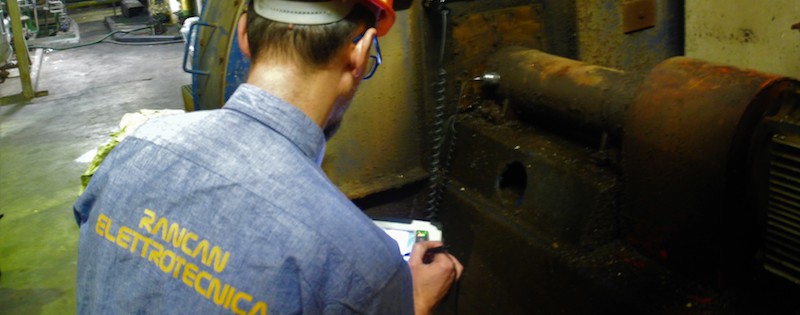Fan Balancing and Equilibrating: How to Perform It Effectively While Saving Resources
With CEAR technicians, it is possible to achieve effective fan balancing and equilibrating, saving intervention time and human resources. We perform vibration analysis and operational interventions, certifying the quality of the final result with instrumental surveys.

For over 20 years, we at CEAR have specialized in fan balancing (technically known as fan equilibrating), starting with a vibration analysis that provides a functional overview of the machine. This analysis highlights all present anomalies (both mechanical and electrical) on a graph (vibration spectrum). The vibrations at various frequencies objectively and unequivocally demonstrate the primary and secondary causes of the existing vibrations.
With this approach, fan vibrations start with certified measurements to identify the component that first requires corrective intervention. There can be mechanical issues (worn bearings, loose supports, fan motor misalignment, fan deformation, etc.) or electrical problems related to the power supply (harmonics beyond permissible limits) or incorrect inverter supply connected to the fan motor.
In this way, no time is wasted on fan balancing that does not meet expectations: the intervention aims to confidently replace defective or worn components and recalibrate parameters that are not correctly configured. We are not just a predictive analysis firm that provides opinions on problems, but a company that offers solutions: starting with a thorough preliminary analysis of the problem, fan balancing may become the final phase of the intervention after resolving other existing malfunctions.
The causes of the vibrations present in a fan are first analyzed, and then, based on an established intervention plan, we carry out all operations to bring the fan within the permissible residual vibration values defined by the standards.
A specific problem
Often, clients request our intervention to check vibrations in a fan considered excessive, possibly after having performed other balancings over time. Our investigation method highlights the true causes of the imbalance that go beyond the fan’s own imbalance.
A case study
A paper manufacturing company contacted us for the balancing of the dryer fan. This fan had been subjected to previous balancings that did not yield the expected result over time, with significant vibrations reappearing shortly after the last balancing. After performing a vibration analysis with the fan at thermal operating temperature, a problem with the inverter configuration of the drive motor supply and a mechanical loosening of the main fan shaft supports were diagnosed.
The initial steps involved recalibrating the inverter and inspecting the shaft support bearings. The frequency related to electrical harmonics decreased slightly but persisted in the main peak, affecting the overall vibration profile. The mechanical analysis also revealed that the wear of the shaft support bearing seat did not ensure a solid coupling.
The work plan, based on the objective data collected and agreed upon with the client, included a significant intervention during the next scheduled plant shutdown. The corrective actions outlined in the work plan (shaft remetallization, replacement of shaft support bearings, inverter replacement, and realignment of the motor to the fan shaft) validated the diagnosis made during the predictive analysis phase. The final phase of fan balancing resulted in an insignificant residual vibration, well within the regulatory limits.
No attempts at unnecessary correction or adjustment were made; instead, the intervention focused on addressing only the components in need of attention or replacement, ensuring an efficient use of resources and manpower.
